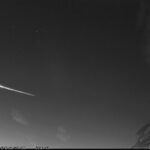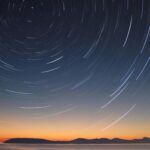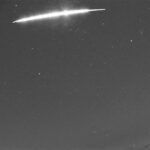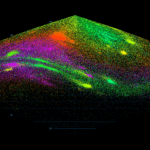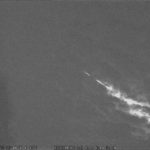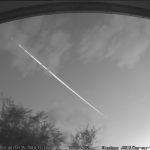Calibration of the spectrograph resolution in the x-axis (wavelength) was performed using a Baader calibration neon lamp. Calibration was performed as non-linear, using 6 multiplets of the neon emission lines at wavelengths between 5852 and 7032 Å. Calibration of the emission line intensity (y-axis) was performed using a reference light source with a continuous emission spectrum (Osram Eco Pro Classic 20W) at a wavelength between 3500 and 9000 Å. The spectrum of the reference source was measured in a test laboratory (Vyrtych Development and Testing Center), the spectrum was calibrated in both axes (wavelength, intensity). The spectrum of the reference source was then measured by the astronomical spectrographs (QHY5L-IIM and GS3-U3-32S4M-C). The resulting calibration curve of the relative transmittance in relation to the wavelength is used for the calibration of all spectrographs installed at the Valašské Meziříčí Observatory or at the Teide Observatory.
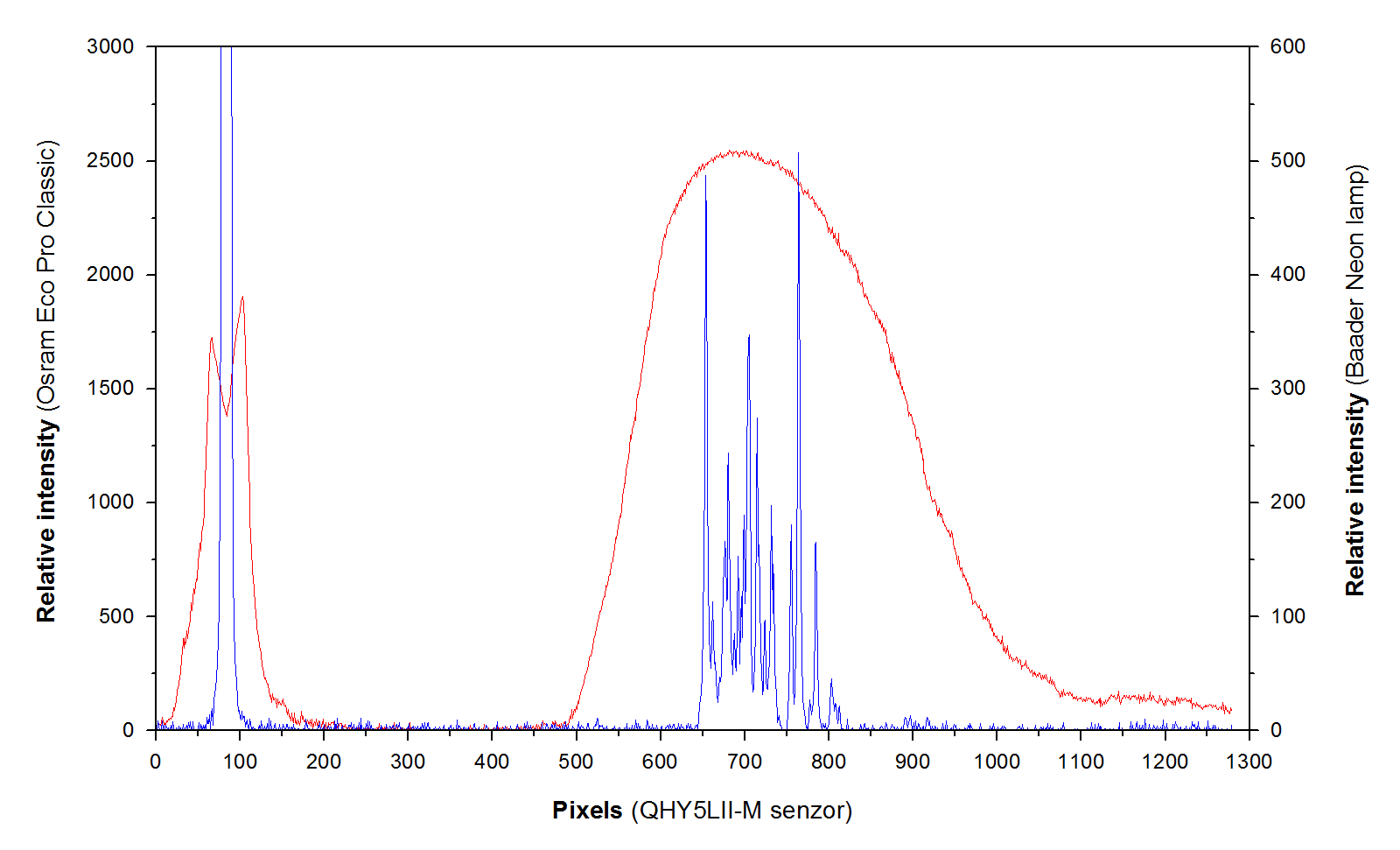
Raw (uncalibrated) curves from calibration sources measurement – Osram Eco Pro Classic 20W (y- axis calibration, marked in red) and Baader calibration neon lamp (x-axis calibration, marked in blue). Measurement was performed by the spectrograph QHY5L-IIM, on the y-axis of the graph is the intensity of the spectrum (relative units) and on the x-axis are pixels of the spectrograph sensor.
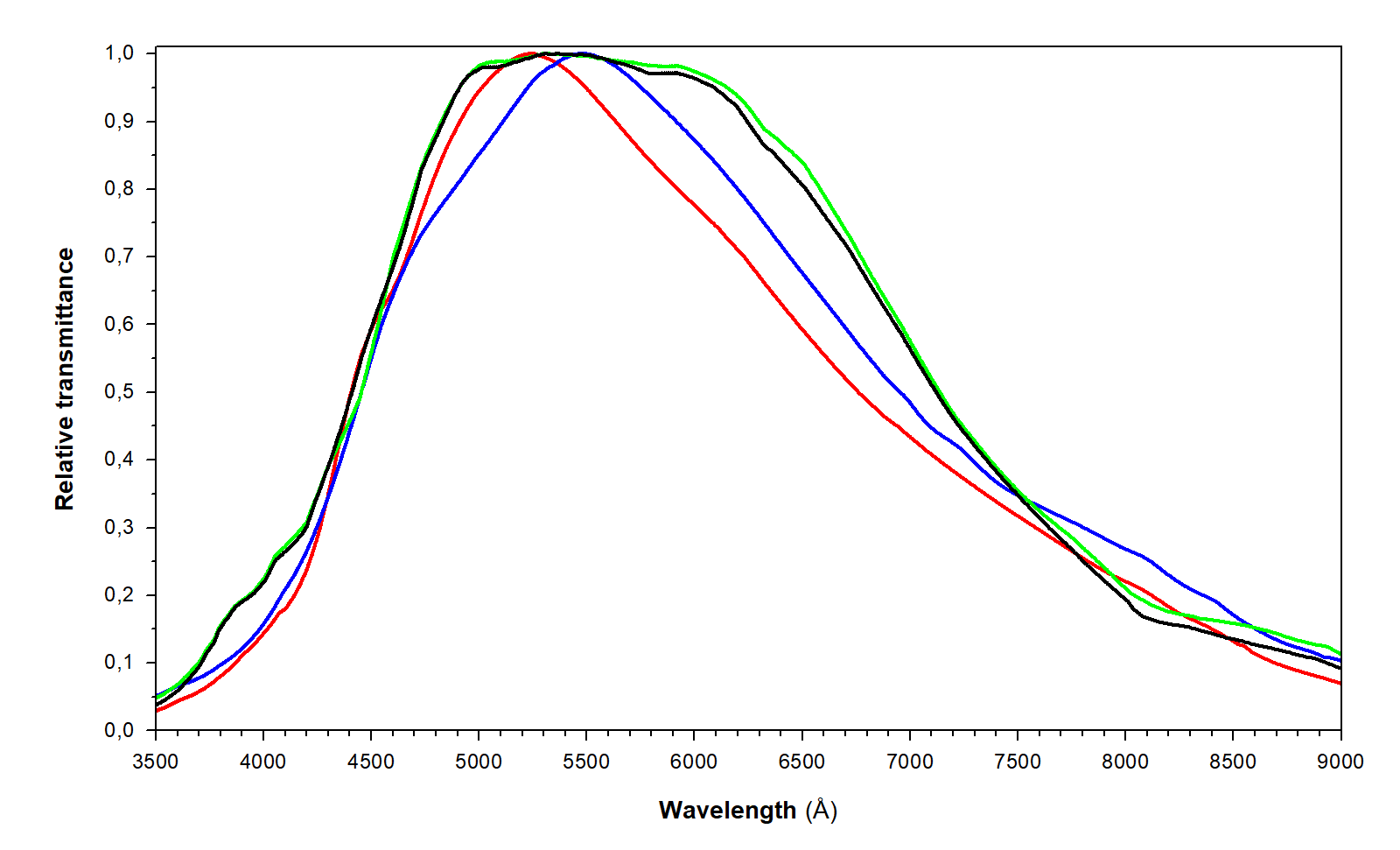
The calibration curve of the relative transmittance of the spectrographs. The calibration curves of the following spectrographs are shown: Watec 902 H2 Ultimate (marked in green), VE 6047 EF/OSD (marked in black), QHY5L-IIM (marked in red), PointGrey Grasshoper3 GS3-U3-32S4M-C (marked in blue). On the y-axis of the graph is the spectrograph relative transmittance (relative units) and on the x-axis is wavelength (Å).
Meteoroid plasma was simulated in UFCH JH AVČR (J. Heyrovský Institute of Physical Chemistry, Academy of Sciences of the Czech Republic) laboratory by laser ablation of meteorites samples using Lambda Physik (ArF) excimer laser. The laser emits ~10-ns pulses on wavelength of 193 nm and energy of 200 mJ. Laser beam was focused using calcium fluoride lens (focal length of 50 mm) on solid target (sample of meteorite) attached on XYZ rotation stage. The system is placed in a vacuum interaction chamber equipped with a collimator connected directly with high resolution Echelle Spectrograph (ESA 4000, LLA Instruments GmbH, Germany). The low resolution spectrum was simultaneously measured using astronomical spectrograph. By measuring the meteorites spectra using high resolution Echelle Spectrograph, identification of the elements emission lines in the spectrum obtained by the astronomical spectrograph QHY5LII-M was performed. Measurements of the following meteorite samples were performed: Chelyabinsk (LL ordinary chondrite), Dhofar 1709 (LL ordinary chondrite), Dhofar 1764 (CV carbonaceous chondrite), JAH 804 (Jiddat al Harasis, HED eucrite), JAH 815 (Jiddat al Harasis, CO carbonaceous chondrite), NWA 3118 (Northwest Africa, CV carbonaceous chondrite). NWA 8212 (Northwest Africa, H ordinary chondrite), NWA 8214 (Northwest Africa, CK carbonaceous chondrite), NWA 869 (Northwest Africa, L ordinary chondrite), Porangaba (L ordinary chondrite), RAS 445 (Ramlat as Sahmah, L ordinary chondrite), SAU 567 (Sayh al Uhaymir, H ordinary chondrite), SAU 571 (Sayh al Uhaymir, L ordinary chondrite). Due to the number of individual types of meteorites, this measurement can be used to identify the emission lines of the meteor spectrum recorded by the astronomical spectrograph QHY5LII-M.
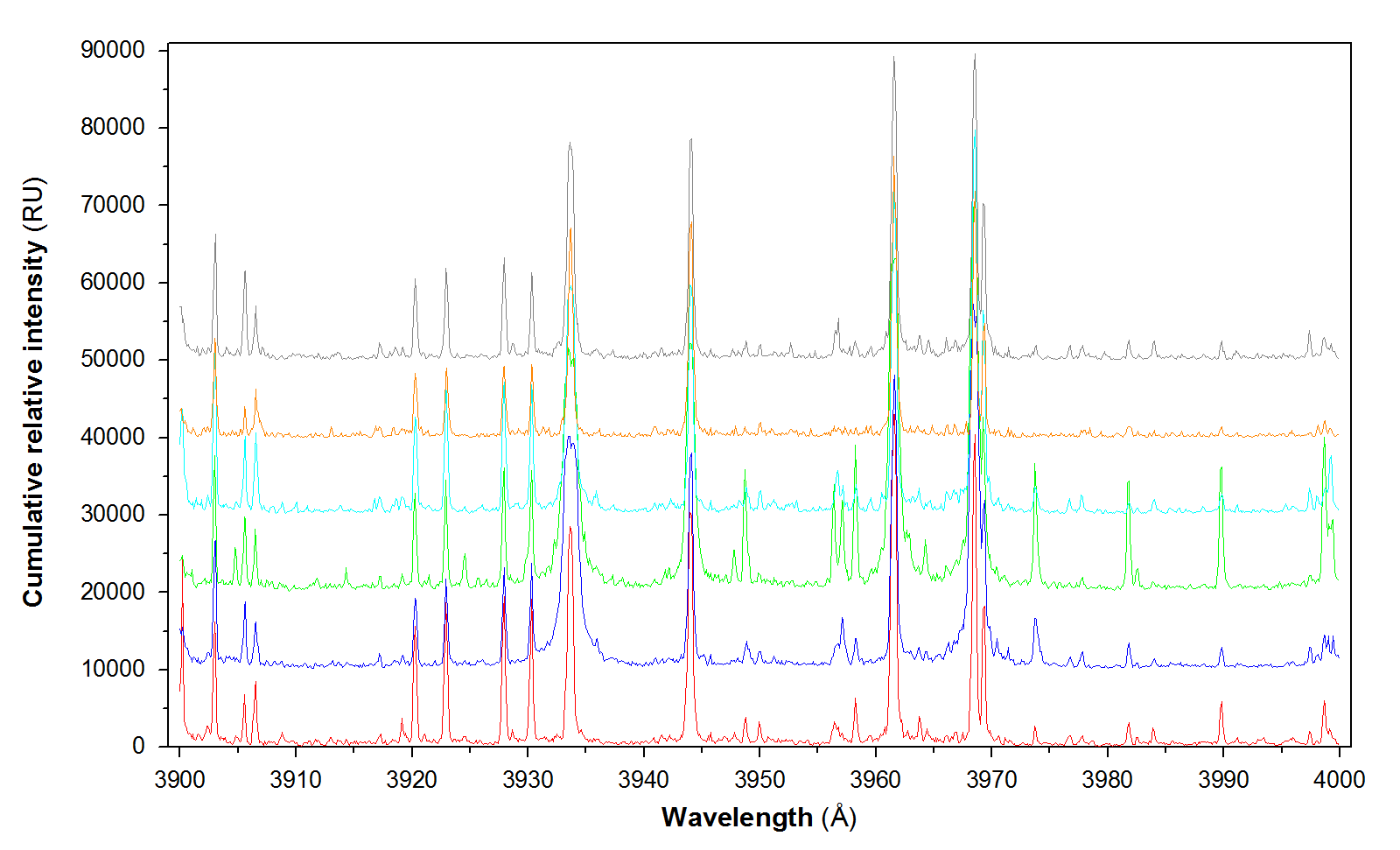
Sample analysis of meteoroid plasma using Lambda Physik (ArF) excimer laser and high resolution Echelle spectrograph. Measurement in the range between 3900 and 4000 Å contains the following meteorite samples: Dhofar 1709 (LL ordinary chondrite, marked in red), Dhofar 1764 (CV carbonaceous chondrite, marked in blue), JAH 804 (HED eucrite, marked in green), JAH 815 (CO carbonaceous chondrite, marked in light blue), Porangaba (L ordinary chondrite, marked in orange), NWA 8212 (H ordinary chondrite, marked in grey).
Comparative experiments with atmospheric gases have been performed using Laser Induced Breakdown in air and electric discharges. The emission spectra of electric discharge plasma from a positive column discharge in the air were simultaneously observed using the Echelle Spectrograph and the astronomical spectrograph QHY5LII-M. The positive column discharge tube (25 cm long with an inner diameter of 12 mm) was covered with a glass outer jacket and equipped with CaF2 windows transparent within the operation range of both spectrographs. The pulsed discharge was maintained by a high-voltage transistor switch (HTS 81, Behlke electronic GmbH, Frankfurt, Germany) applied between the stainless steel anode and the grounded cathode. The air plasma was cooled by water in the outer jacket of the cell. The voltage drop across the discharge was 1200 V, and the current was 250 mA. The spectra of LIDB in the air have been recorded using both spectrographs by focusing the laser radiation in the air. Laser pulses of 20 Hz, 450 mJ and 1064 nm generated by a Quantel Q-smart 450 Nd:YAG laser have been focused by a 10 cm coated quartz lens.




